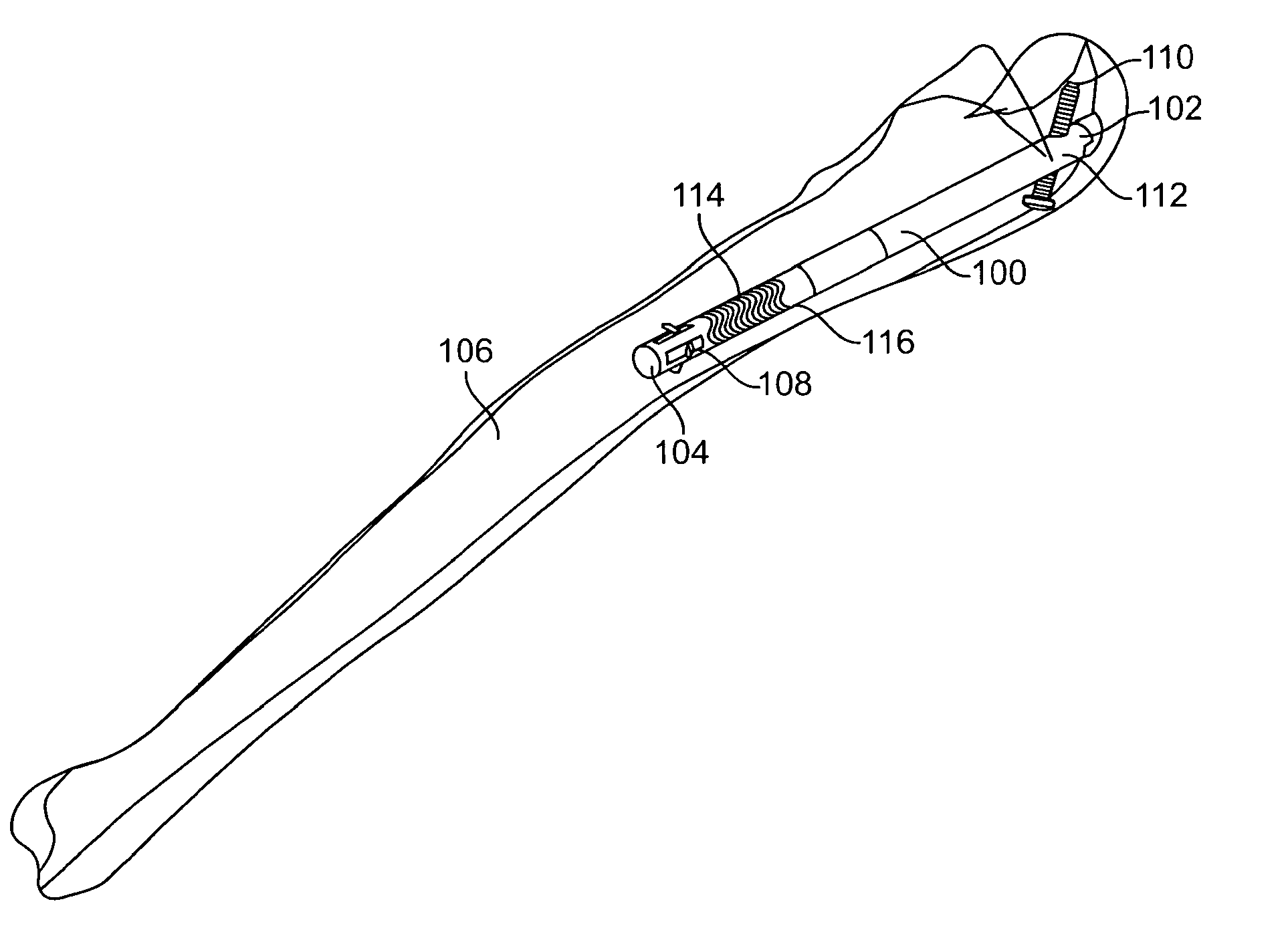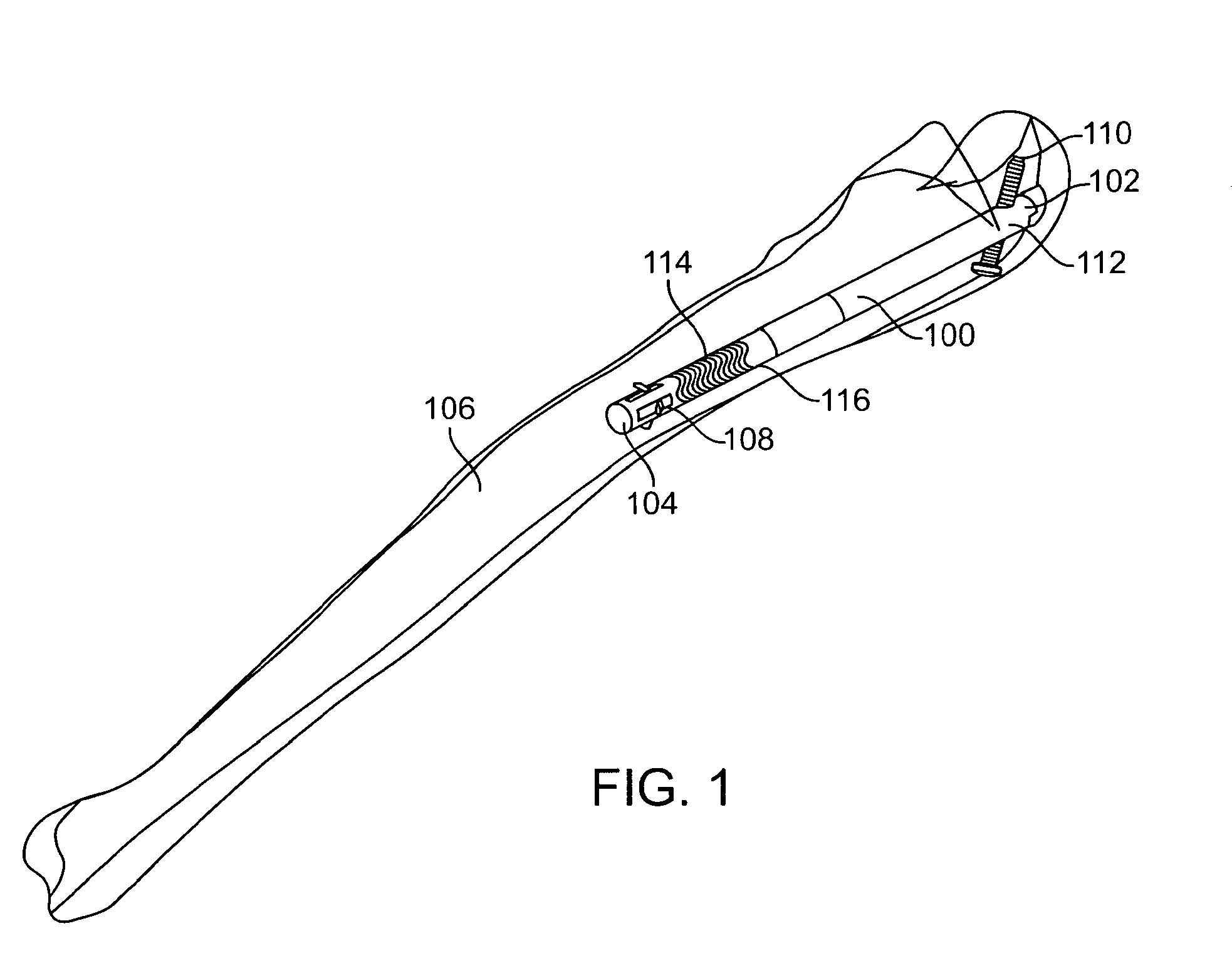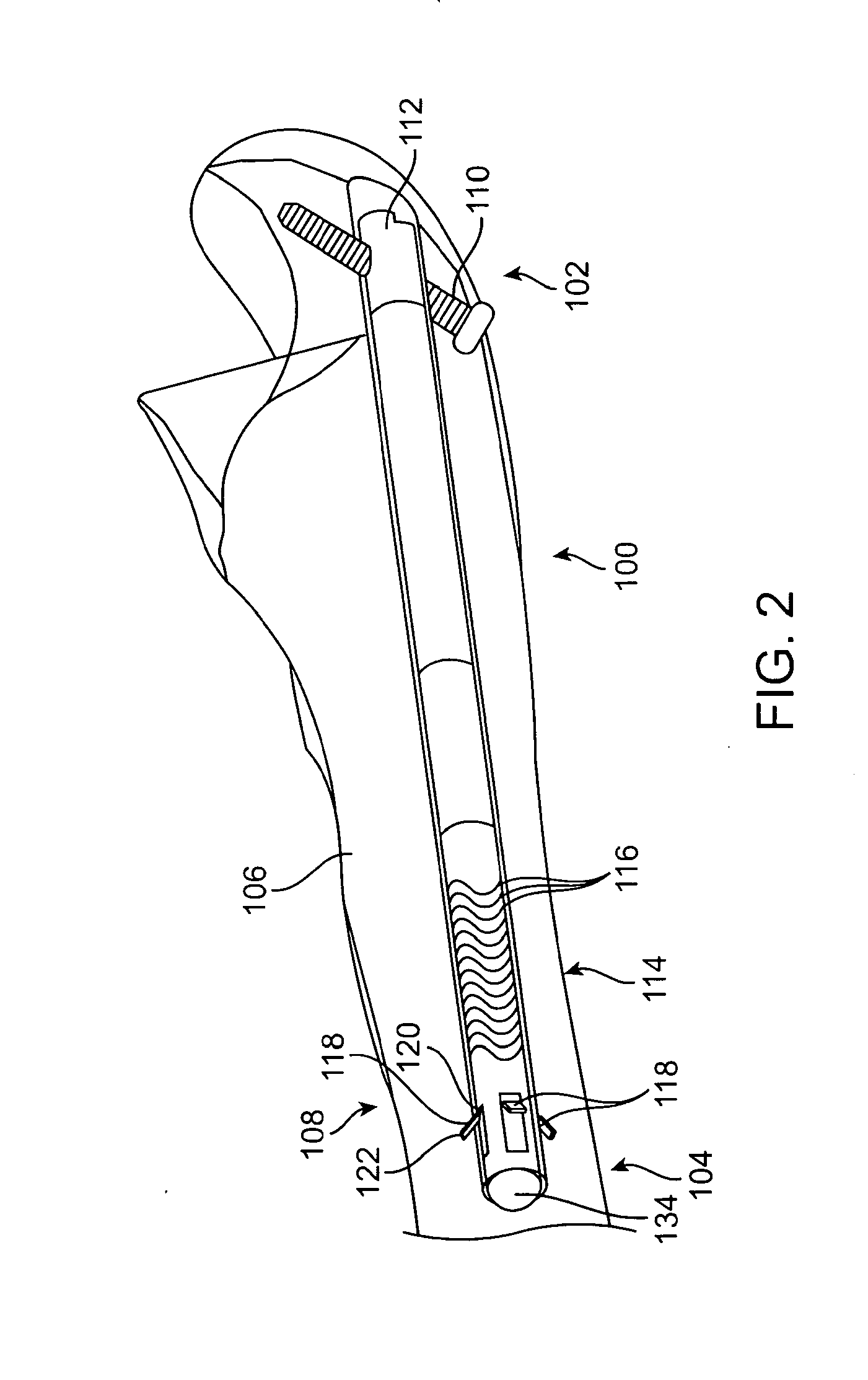Bone fixation device, tools and methods
a bone fixation and bone technology, applied in the field of bone fixation devices, tools and methods for providing bone reconstruction and reinforcement, can solve the problems of pain or necrosis of bone, significant number of bone fractures, and take several months for bone to heal
- Summary
- Abstract
- Description
- Claims
- Application Information
AI Technical Summary
Benefits of technology
Problems solved by technology
Method used
Image
Examples
embodiment 500
[0170]Referring to FIGS. 13A-13H, another gripper embodiment 500 is shown. Gripper 500 is similar to gripper 400 described above in that it includes high moment arms crossing over the centerline of the gripper to provide high contact forces even at low expansion angles. Gripper 500, however, includes three sets of scissor-arm pairs instead of two, providing two contact areas every 120 degrees around the gripper instead of every 180 degrees as does gripper 400. While embodiments having two and three sets of gripper arms are shown, other embodiments of the invention (not shown) may use only a single set of arms or more than three sets. Additionally, while the arm sets shown each have two arms, it is envisioned that each “set” of arms may include a single arm pinned to the two end pieces, or more than two arms.
[0171]Gripper 500 includes a first end piece 502 with three long arms 504 each pivotably connected at their proximal ends to first end piece 502 by a pin 506. First end piece 502...
embodiment 600
[0173]Referring to FIGS. 14A-14H, another gripper embodiment 600 is shown. Gripper 600 includes a first end piece 602 with three pairs of short arms 604 each pivotably connected at their proximal ends to first end piece 602. First end piece 602 is provided with six recesses 620 to receive short arms 604, as best seen in FIG. 14G. A pin 606 is used to pivotably secure each of the three pairs of short arms 604 to first end piece 602. Gripper 600 also includes a second end piece 608, which may be constructed to be identical to first end piece 602. Second end piece 608 also includes six recesses 620 to receive another three pairs of short arms 604. These additional three pairs of short arms 604 are pivotably secured at their proximal ends to second end piece 608 with three more pins 606. A distal end of each pair of short arms 604 connected to first end piece 602 is pivotably connected to one end of a long arm 610 by a pin 614. In a similar manner, a distal end of each pair of short arm...
embodiment 700
[0175]Referring to FIGS. 15A-15H, another gripper embodiment 700 is shown. Gripper 700 includes a first end piece 702 with three short arms 704 each pivotably connected at their proximal ends to first end piece 702. First end piece 702 is provided with three recesses 720 to receive short arms 704, as best seen in FIG. 15G. Pins 706 are used to pivotably secure each of the three short arms 704 to first end piece 702. Gripper 700 also includes a second end piece 708, which may be constructed to be identical to first end piece 702. Second end piece 708 also includes three recesses 720 to receive another three short arms 704. These additional three short arms 704 are pivotably secured at their proximal ends to second end piece 708 with three more pins 706. A distal end of each short arm 704 connected to first end piece 702 is pivotably connected to one end of a long arm 710 by a pin 714. In a similar manner, a distal end of each short arm 704 connected to second end piece 708 is pivotab...
PUM
 Login to View More
Login to View More Abstract
Description
Claims
Application Information
 Login to View More
Login to View More - R&D
- Intellectual Property
- Life Sciences
- Materials
- Tech Scout
- Unparalleled Data Quality
- Higher Quality Content
- 60% Fewer Hallucinations
Browse by: Latest US Patents, China's latest patents, Technical Efficacy Thesaurus, Application Domain, Technology Topic, Popular Technical Reports.
© 2025 PatSnap. All rights reserved.Legal|Privacy policy|Modern Slavery Act Transparency Statement|Sitemap|About US| Contact US: help@patsnap.com



